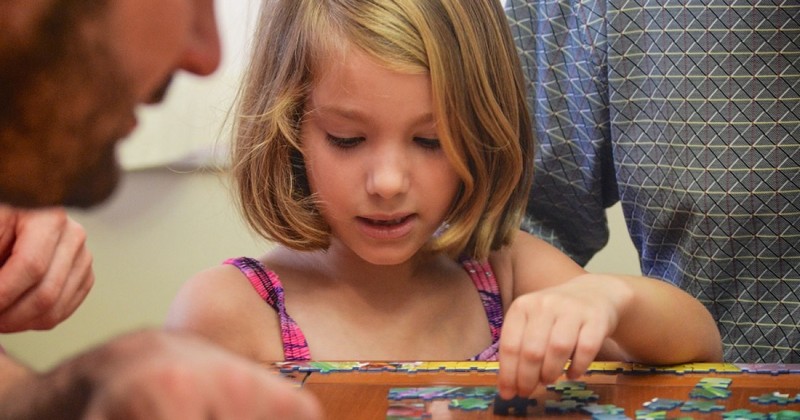7 key ideas for understanding child psychology

Fundamental ideas that help to understand the way children think and feel.
Child psychology is a fascinating field of research and intervention, as well as being one of the most important.
Knowing better or worse the way children behave, think and feel can have very important implications for their physical and mental development. Not in vain, childhood is a stage in which we are especially sensitive to what happens around us, and if we do not have the knowledge or adequate supervision as parents and guardians, the consequences can be very negative.
For this reason, in the following lines we will see a selection of fundamental ideas pertaining to the world of child psychologywith which it is possible to better understand the little ones.
7 keys to better understand child psychology
These are several fundamental ideas that are worth knowing as parents, mothers, guardians or education professionals when helping children develop.
1. Children are not incomplete adults
One of the most erroneous ways of understanding childhood is to believe that children are like adults with missing components.
It is much more appropriate and realistic to understand that they have their own way of thinking and feeling, and that although as they grow up their minds will evolve, they are already "complete" people because they areThey create their own explanations about what they do not know, they develop their own way of playing and relating to others, they create their own codes of behavior in all areas of life, etc.
2. Childhood is not a race to learn
There are those who strive for their children to learn as much as possible in the shortest possible time. This is a mistake; in childhood the possibility of enjoying free time, socializing and playing are fundamental, as well as being an inexhaustible source of spontaneous learning. spontaneous learning.
3. Children's role models are the rest of the children.
Another key idea of child psychology is that as adults who raise them, give them affection and help to educate them, our role is very important in terms of favoring a good development of children. However, the vast majority of children have as their main references children their own age or a little older than themselves..
This is natural and there is nothing wrong with it in itself; there is nothing wrong with our children not adopting our values, our tastes or our way of thinking, and it is certainly totally detrimental to try to "force" this to happen. What we can do is to allow those ideas, knowledge and values to be available in the home where our children grow up, so that if they are compatible with their way of being, they have the opportunity to make them their own as well.
4. They need an environment with stimulation, contact with others, and affection.
Scientific research shows that all children need regular physical contact with other people and environments that contain a certain variety of stimuli. Otherwise, they may develop severe psychological and psychiatric disorders. In any case, most homes and families already meet these conditions.
5. Curiosity is the engine of their learning
Curiosity is one of the hallmarks of childhood, and it is through curiosity that most learning situations take place.It is through curiosity that most learning situations take place. Therefore, we should not make them feel ashamed for asking too many questions, even if it may exhaust our patience.
6. Incentives are much more effective than punishments.
In the medium and long term, create a system of incentives (not necessarily material, they can also be symbolic or based on praise and admiration) is more effective than punishing children when they misbehave. In this way, it is easier for them to share goals with their parents or caregivers.
7. Imagination and play cannot be separated.
As a general rule, children who do not have opportunities to play alone or with others will not have as many opportunities to imagine.
The habit of getting lost in imaginary situations is an extension of the play that occurs by interacting with the environment.Instead of manipulating toys and exploring places, imaginary elements are manipulated and explored, inspired by the stimuli the child has encountered in the real world.
Therefore, being able to allow them to play, read, watch movies... all this brings them more referents with which they can create imaginary situations more interesting and richer in nuances.
Bibliographical references:
Berk, L.E. (2015). Infants and children: Prenatal through middle childhood (7 ed.). London: Pearson. Cromdal, J. (2009). Childhood and social interaction in everyday life: Introduction to the special issue. Journal of Pragmatics. 41 (8): pp. 1473 - 1476. Grotewell, P.; Burton, Y. (2008). Early Childhood Education: Issues and Developments. New York: Nova Sciences Publishers, Inc. Taylor, L.C.; Clayton, J.D.; Rowley, S.J. (2004). Academic Socialization: Understanding Parental Influences on Children's School-Related Development in the Early Years. Review of General Psychology. 8 (3): pp. 163 - 178.
(Updated at Apr 12 / 2024)